| Umělec magazine 2010/1 >> Ways of working | List of all editions. | ||||||||||||
|
|||||||||||||
Ways of workingUmělec magazine 2010/101.01.2010 Daniel G. Andújar -Iris Dressler | en cs de |
|||||||||||||
|
I.D.: In one of our recent conversations, you described how the machinery of large art institutions alienates artists from their work. The artist, arriving at the museum to install his or her works, is sent to a luxury hotel while an armada of professionals cares for the ‘proper’ presentation of his of her work. By this time, the curator and the museum’s PR and education departments have long defined how the artist’s works will be mediated to the public. When the artist finally arrives at the exhibition, he or she no longer recognises his or her work.
D.G.A.: The cultural industry abandoned cultural production and the creation of new content decades ago. Artists have been pushed to the sidelines to make room for a new elite of cultural managers working on biennial events in ivory towers conceived more like mausoleums. In a cultural industry that employs more and more people, artists are found at the lowest level of the economic hierarchy. A lot of people can earn a living in this world, but artists are ‘risking their lives’. Can the art system survive without contemporary artists? It would seem that many institutions can. Art, like any cultural process, is basically a process of transmission and transference, a continuous, permanent and necessary dialogue. But we must not forget that it is also transgression, rupture, irony, parody, appropriation, misappropriation, confrontation, investigation, exploration, interrogation and opposition. Art can and must find new territories in which to develop new ideas. And if they don’t exist, we have to try to create them. Artistic practice must be transformed into a form of ‘resistance’ against an increasingly globalised, hierarchical, diffused, and standardised world. The practice of art must reveal the configurations of power and establish mechanisms that can ensure its long-term impact and extend its discourse beyond the world of art lovers and institutions. I.D.: In reference to your notion of ‘do-it-together’ and to your activities related to freeware and open source software, to what extent do the new communication and information technologies offer (or even demand) specific ways of working? D.G.A.: The ‘do-it-yourself’ slogan was the Ikea slogan adopted by many artists from the mid-nineties on. But it was the wrong one. Part of my work uses a number of components that are more or less directly related to free software. For me, free software’s fundamental abolishment of intellectual property rights represents a chance for structurally and conceptually ‘re-programming’ society for the better. New technologies are gradually eliminating the need for the art management services that have acted as intermediaries between artists and those in control of production, distribution and commercialisation. These new tools and resources are also inextricably linked to the fundamental transformation of the way we think, relate to one another, consume, produce and trade. I.D.: All of your art projects are based on collaborative research that critically explores various phenomena and their media representations. Moreover you act as curator, conduct workshops, write articles, are involved in protest activities, and publish magazines and web forums. In how you work, I see all these different roles related to each other, in the sense that you understand them as separate but connected aspects of collaborative art production and for reclaiming free spaces of action. D.G.A.: I do not distinguish between one activity and the other. Art cannot limit itself to simply airing great questions about the human and the divine, nor to obeying purely aesthetic or market-driven strategies; it must be committed to and involved in social and political processes. We must redefine the role of the artist in society. Don’t professionals in other disciplines – educators, journalists, scientists – try to redefine or rethink their role in society, gradually adapt to change, find their place in society? The classic conception of the artist should be process-oriented in nature, something like an analyst or critic. Artists must offer alternative actions, open spaces of confrontation and criticism. I.D.: How do you understand the differences and connections between the city, the internet, the museum and the ‘old media’? D.G.A.: Public space is the basic realm in which I operate as an artist. We must be alert to attempts at limiting the use and enjoyment of these free spaces. The city is the point of reference for public space as we have known it until recently. The internet, as a public space, is also determined by social and power relationships and by a system of negotiations quite similar to that of the city. By contrast, the spaces set aside for artistic practice are specially designed and the result of a historical evolution. It is a specific, restricted, protected space for a highly defined cultural process. As artists, we should invest much more in its management, evolution and transformation, or we should abandon it once and for all in which case its function will remain limited and subservient to the service and entertainment industries. As regards the media, the traditional media (print, radio, television) are a fundamental pillar of a system that has been foundering for some time. Unilateral, closed, defined discourse that does not offer an opportunity for response, participation or collective management is no longer accepted. I.D.: One point of departure for the Postcapital project was a discussion you had with Cuban writer Iván de la Nuez about being born around the same time (in the mid-1960s) but in quite different situations: you in the capitalist ‘West’ and he in the communist ‘South’. When Postcapital opened in 2006 as a collaboration between you, de la Nuez and the Cuban artist Carlos Garacoia, it emphasized the opposition between ‘Left’ and ‘Right’. Visitors had to decide whether to enter the exhibition from the left or the right; they could not enter the exhibition straight ahead (from midway). D.G.A.: The discussion was centred on questions of specific contexts. You cannot choose where you are born, nor normally where you want to live. Some elements depend on chance; others, conversely, depend directly on social, cultural, political and economic conditions. At the start of the project, a dialogue was proposed that envisaged personal circumstances as a set of dichotomies, contradictions, affirmations and negations. From there, we would adopt certain strategies when deciding on the project’s space, route and interpretation. The design obliged visitors to make decisions that influenced how the project was read. We played with very simple metaphors of left and right, directions and routes, colours associated with political imaginary. As a result, the reading of the project was determined by individual decisions, chance, fortuitousness and coincidence – just like life itself. I.D.: We have often been asked why the Postcapital Archive is not available on the internet. To me, it is not about having an open online database, but rather about the complex problems of reading and understanding information in the age of the internet. The confrontation between your spatial (and spatially experienceable) interpretation of the material and the archive as, again, the result of decisions and filters, is crucial. You cannot take away one part or the other. D.G.A.: In this information society, the basic resource will be knowledge, and the will to apply knowledge in order to generate more knowledge should be grounded in a heightened effort to systematise and organise it, demanding that learning be lifelong. This was the big change, beyond mere formal questions about the media. In a short space of time we have gone from visiting the museum, the library, the archive, to living within the archive itself. Researchers tell us that the human being’s working memory capacity is limited. How, then, are we going to manage this vast quantity of documents, information, images and so on? We have to generate mechanisms that allow us to transform all this noisy mess into specific knowledge in order to be able to develop any of the particular nuances of our personalities. And we have to do so collectively, across fields and disciplines, certainly beginning with education. I propose creating a true culture of the archive, learning to learn from the context of a wealth of choices – life within the archive, in a knowledge society that provides options and requires us to choose again and again, to learn without limits, to value new opportunities and confront numerous challenges and puzzles; a knowledge society that is unacquainted with genre work, a society that questions old classifications, control systems, hierarchies, legitimacies, and values.
01.01.2010
Recommended articles
|
|||||||||||||
|
04.02.2020 10:17
Letošní 50. ročník Art Basel přilákal celkem 93 000 návštěvníků a sběratelů z 80 zemí světa. 290 prémiových galerií představilo umělecká díla od počátku 20. století až po současnost. Hlavní sektor přehlídky, tradičně v prvním patře výstavního prostoru, představil 232 předních galerií z celého světa nabízející umění nejvyšší kvality. Veletrh ukázal vzestupný trend prodeje prostřednictvím galerií jak soukromým sbírkám, tak i institucím. Kromě hlavního veletrhu stály za návštěvu i ty přidružené: Volta, Liste a Photo Basel, k tomu doprovodné programy a výstavy v místních institucích, které kvalitou daleko přesahují hranice města tj. Kunsthalle Basel, Kunstmuseum, Tinguely muzeum nebo Fondation Beyeler.
|







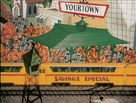















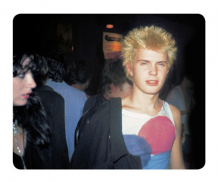




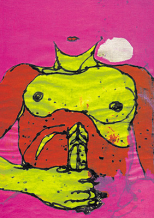
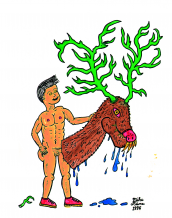
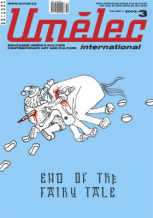
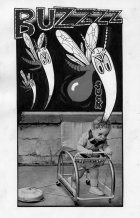


 We Are Rising National Gallery For You! Go to Kyjov by Krásná Lípa no.37.
We Are Rising National Gallery For You! Go to Kyjov by Krásná Lípa no.37.
Comments
There are currently no comments.Add new comment